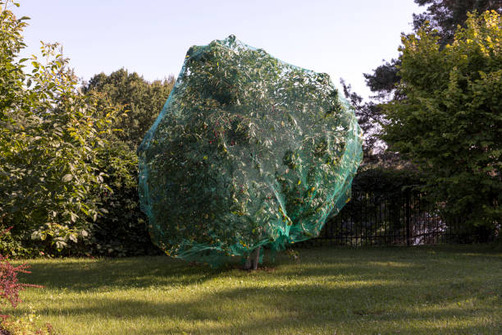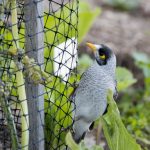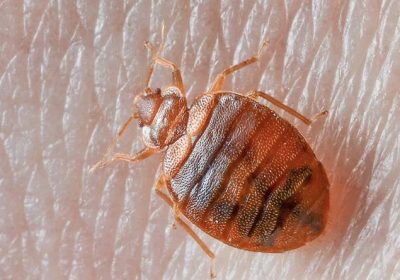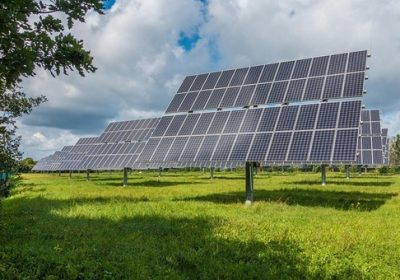Top Benefits of Using Bird Netting in Agriculture and Horticulture
Have you ever noticed how much effort farmers and gardeners put into protecting their crops? From fertilizers to pest control, the list is endless. Among these measures, bird netting stands out as an essential tool. But what exactly is bird netting? Simply put, bird netting is a protective mesh designed to keep birds away from fruits, vegetables, and other crops. Made from durable materials like polyethylene or polypropylene, bird netting is lightweight, flexible, and incredibly effective.
Importance of Protecting Crops in Agriculture and Horticulture

Imagine spending months nurturing your crops, only to see them ravaged by birds in a matter of days. Heartbreaking, right? Birds, despite their charm, can cause significant damage to crops. They peck at fruits, dig up seeds, and sometimes destroy entire plants. In agriculture and horticulture, protecting crops isn’t just about maintaining aesthetics; it’s about safeguarding your investment and ensuring a bountiful harvest.
Protection from Birds
Explanation of How Bird Netting Prevents Bird Damage
Birds are notorious for their love of fresh produce. They swoop down, peck at fruits, and before you know it, your crop yield is significantly reduced. Bird netting acts as a physical barrier, preventing birds from reaching the crops. The mesh size is small enough to keep even the smallest birds out, ensuring your fruits and vegetables remain untouched.
Types of Crops Commonly Affected by Birds
Birds have a wide range of preferences when it comes to crops. Some of the most commonly affected include:
- Berries: Strawberries, blueberries, and raspberries are a favorite snack for many bird species.
- Fruit Trees: Apples, cherries, and peaches often fall victim to bird attacks.
- Vegetables: Corn and tomatoes can also attract birds, especially during the ripening stage.
Case Studies/Examples of Bird Damage and Prevention
Consider the case of a vineyard in California. The vineyard owners noticed a 30% reduction in grape yield due to bird damage. After installing bird netting, the losses were minimized, leading to a 25% increase in marketable grapes. Similarly, a berry farm in Oregon saw a significant improvement in yield quality and quantity after implementing bird netting, with damaged fruits dropping from 40% to just 5%.
Increased Yield and Quality
Impact of Bird Netting on Crop Yield
Bird netting doesn’t just protect crops; it enhances yield. By keeping birds at bay, farmers and gardeners can ensure that more fruits and vegetables reach maturity, leading to higher overall yields. This protection is particularly crucial during the critical ripening period when crops are most vulnerable.
Enhancement in the Quality of Fruits and Vegetables
When birds peck at fruits, they cause wounds that can lead to rot and disease, reducing the overall quality of the produce. With bird netting, fruits and vegetables remain unscathed, resulting in healthier, more visually appealing produce. This improvement in quality can translate to higher market prices and greater customer satisfaction.
Statistical Data Supporting Increased Yield and Quality
A study conducted by the University of California found that bird netting in vineyards increased grape yield by up to 25%. Another research project by the University of Florida reported a 30% increase in marketable berries after the implementation of bird netting. These statistics underscore the tangible benefits of using bird netting in crop protection.
Cost-Effectiveness
Initial Investment vs. Long-Term Savings
One of the primary concerns for farmers and gardeners is the cost of bird netting. While the initial investment might seem high, the long-term savings are substantial. Bird netting is durable and can last several seasons, reducing the need for frequent replacements.
Reduction in the Need for Other Bird Deterrent Methods
Bird netting eliminates the need for other bird deterrent methods such as scarecrows, sound cannons, or chemical repellents. These alternatives often require continuous maintenance and additional costs. In contrast, bird netting provides a one-time solution with minimal upkeep.
Maintenance Costs and Lifespan of Bird Netting
High-quality bird netting can last between 5 to 10 years, depending on the material and environmental conditions. Maintenance is straightforward: regular checks for any tears or holes and simple repairs if needed. This longevity and ease of maintenance make bird netting a cost-effective solution for crop protection.
Environmental Benefits
Reduction in the Use of Chemical Bird Repellents
Chemical bird repellents can harm the environment, affecting soil and water quality and posing risks to non-target species. Bird netting offers an eco-friendly alternative by providing a physical barrier without the need for harmful chemicals.
Eco-Friendly Aspect of Bird Netting
Bird netting is made from recyclable materials, and its use aligns with sustainable farming practices. By reducing the reliance on chemical repellents and other harmful methods, bird netting helps promote a healthier ecosystem.
Contribution to Sustainable Farming Practices
Sustainable farming is all about minimizing environmental impact while maximizing productivity. Bird netting fits perfectly into this model by protecting crops in a way that is safe for the environment. This practice supports biodiversity and helps maintain the natural balance in farming areas.
Versatility and Adaptability
Various Types of Bird Netting and Their Uses
Bird netting comes in different types and sizes, each suited for specific applications. Some common types include:
- Extruded Netting: Ideal for covering large areas like orchards and vineyards.
- Woven Netting: More durable and suitable for high-wind areas.
- Knotted Netting: Highly durable and perfect for long-term use.
Adaptability to Different Crops and Farming Setups
Bird netting is incredibly versatile and can be adapted to various farming setups. Whether you’re protecting a small garden or a large commercial farm, there’s a bird netting solution that fits your needs. The netting can be draped over trees, stretched across fields, or even used to cover individual plants.
Customization Options Available for Different Agricultural Needs
Customization is another key benefit of bird netting. It can be tailored to fit specific areas, ensuring maximum protection. Custom options include different mesh sizes, colors, and materials, allowing farmers and gardeners to choose the best solution for their unique needs.
Ease of Installation and Maintenance
Simple Installation Process
Installing bird netting is straightforward and can often be done without professional help. Basic tools like poles, clips, and ties are usually all that’s needed. There are plenty of tutorials and guides available to help you through the process.
Durability and Resilience of Bird Netting Materials
Bird netting is designed to withstand various environmental conditions, from intense sunlight to heavy rain. The materials used are UV-stabilized, ensuring they don’t degrade quickly under the sun. This resilience means that once installed, bird netting requires minimal maintenance.
Low Maintenance Requirements and Tips for Upkeep
Maintaining bird netting is simple. Regularly inspect the netting for any damage or wear and make repairs as needed. Cleaning the netting occasionally can also help maintain its effectiveness. Using zip ties or clips can make repairs quick and easy.
Protection Against Other Pests
Effectiveness in Deterring Other Small Animals and Pests
Bird netting isn’t just for birds; it can also deter other pests such as squirrels, rabbits, and even some insects. This added layer of protection ensures that your crops are safe from a broader range of threats.
Dual Protection Benefits for Crops
By deterring multiple types of pests, bird netting offers dual protection benefits. This comprehensive protection can significantly reduce crop losses and improve overall yield, making it a valuable addition to any farming or gardening setup.
Examples of Other Pests Deterred by Bird Netting
For example, a study conducted in a commercial apple orchard showed that bird netting effectively kept out not only birds but also small mammals like raccoons and squirrels, which are known to cause significant damage to fruit crops.
Improved Aesthetics
Aesthetic Benefits for Horticulture and Garden Areas
Beyond its functional benefits, bird netting can also enhance the aesthetics of your garden or horticultural area. It provides a neat and organized appearance, helping to keep your plants looking their best.
Integration with Landscape Design
Bird netting can be integrated into various landscape designs without being obtrusive. It can be easily camouflaged with natural elements, ensuring that it doesn’t detract from the beauty of your garden or farm.
Visual Appeal and Unobtrusive Nature of Bird Netting
Available in different colors and materials, bird netting can blend seamlessly into your landscape. Its unobtrusive nature means it won’t be an eyesore, allowing you to protect your crops without compromising on aesthetics.
Conclusion
In closing bird netting offers a multitude of benefits for both agriculture and horticulture. It protects crops from birds and other pests, increases yield and quality, is cost-effective, environmentally friendly, versatile, easy to install and maintain, and even improves the aesthetics of your growing areas.
Final Thoughts on the Importance of Investing in Bird Netting for Crop Protection
Investing in bird netting is a smart decision for any farmer or gardener. It provides a reliable, long-term solution to crop protection, ensuring that your hard work results in a bountiful and high-quality harvest.
Encouragement for Farmers and Gardeners to Consider Bird Netting for Their Operations
If you haven’t already, consider incorporating bird netting into your crop protection strategy. The benefits far outweigh the initial investment, making it a worthwhile addition to your agricultural or horticultural practices.
FAQs
What is bird netting made of?
Bird netting is typically made from durable materials such as polyethylene or polypropylene. These materials are UV-stabilized to withstand harsh environmental conditions.
How long does bird netting last?
High-quality bird netting can last between 5 to 10 years, depending on the material and environmental conditions.
Is bird netting safe for birds?
Yes, bird netting is designed to be a humane way of keeping birds away from crops. It acts as a physical barrier without harming the birds.
Can bird netting be used for all types of crops?
Bird netting is versatile and can be used for a wide range of crops, including fruits, vegetables, and ornamental plants. Customization options are available to suit specific needs.
How do I install bird netting?
Bird netting can be installed using basic tools such as poles, clips, and ties. There are many online guides and tutorials available to help with the installation process.
Does bird netting require maintenance?
Bird netting requires minimal maintenance. Regular inspections for damage and occasional cleaning can help maintain its effectiveness.
Where can I buy bird netting?
Bird netting can be purchased from agricultural supply stores, gardening centers, and online retailers. Look for reputable suppliers to ensure you get high-quality netting.
By understanding the numerous benefits of bird netting and how it can protect and enhance your crops, you can make an informed decision to incorporate this valuable tool into your agricultural or horticultural practices.
Read more about Bird Netting
- Choosing the Right Bird Netting: A Comprehensive Guide
- Choosing the Right Bird Netting Material: A Comprehensive Guide
- Installation Techniques for Bird Netting: Step-by-Step Instructions
- The Environmental Impact of Bird Netting: Balancing Wildlife Protection and Human Needs
- Common Mistakes to Avoid When Installing Bird Netting
- Innovative Bird Netting Solutions for Urban Areas
- The Legal Aspects of Bird Netting: Regulations and Best Practices
- Maintenance and Longevity of Bird Netting: Keeping Your Netting Effective
- Comparing Bird Netting with Other Bird Control Methods: Pros and Cons









